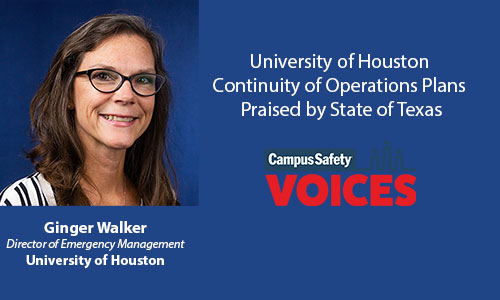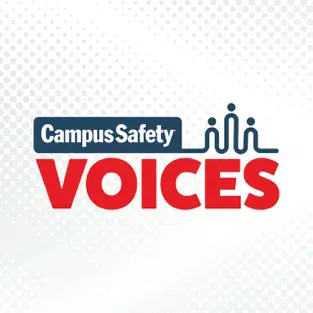In February 2021, Winter Storm Uri brought parts of the United States to a standstill. Over 120 million Americans were placed under winter storm warnings by The National Weather Service.
The winter storm caused power grids to fail across much of the country, leading to blackouts for 5.2 million homes and businesses — the vast majority of which were in Texas. It is estimated that of the 276 people who died, 246 were in Texas — a state largely ill-equipped to handle severe winter weather.
During the storm, Ginger Walker, director of emergency management at the University of Houston, was tasked with protecting the campus’ inhabitants and property (2:15). Two of the biggest challenges were the storm’s impact on the campus’ critical infrastructures and limited state resources due to the storm’s widespread impact. Walker and her team also had to consider the impact on students and faculty who were not on campus (7:48).
“We were starting to get reports in the EOC of isolated power outages, and our HVAC system that controls the temperatures started impacting our computing center,” said Walker, a 2022 Campus Safety Director of the Year finalist. “The computing center had to shut down for a period of time so that they could actually build it back. That computing center not only impacts the folks on campus but it impacts those who are working remotely.”
Other challenges included protecting livestock in the campus’ animal care facility, access to restrooms, lack of heat, and food and water storage.
[promo_content slug=”2022-campus-safety-director-of-the-year-winner-announcement-at-csc”]
Texas State Office of Risk Management Laudes University of Houston’s COOP
Much of the university’s successful response to the storm can be attributed to its various continuity of operations plans (COOP) (35:21). They have been used for every storm and proved especially useful during Uri and Hurricane Nicholas, which hit the state just seven months later.
Walker and her team have run the university’s continuity of operations planning program since its inception. Using a template created by her team, each department establishes a COOP, and then the overarching divisions and colleges complete a plan based on them. All of that information is then used to create the university’s “H” plan, “the big one,” as Walker calls it, which is turned into the state of Texas. It is a massive undertaking as the university is made up of over 200 departments and more than 25 colleges.
On multiple occasions, the State Office of Risk Management (SORM) has acknowledged the plan’s resilience and its ability to allow operations to resume quickly. In 2021, Walker presented at SORM’s Continuity Council Summit where she trained other state agencies on how to build a COOP from the ground up.
While arduous, these plans are absolutely worth the time and energy since they can also be used in non-emergencies.
“Continuity can be a little bit of a difficult task to have folks complete because they feel, ‘Oh, it’s more paperwork.’ But in the end, I try to show them that this is vital to their program itself and not just for an emergency. It’s good for their daily ops,” Walker said. “You don’t know when you personally may not be available. And if you’re not available, there may not be an emergency going on, but there may be other things that are happening that pull you out of your program, and if they pull you out of your program, other people need to step right on in.”
Walker also reminds department heads and researchers that continuity plans are a great way to promote their program when applying for federal grants.
“If you share with federal agencies that you have a continuity plan, they’re more apt to say, ‘Oh, you’re going to do everything in your power to maintain operations at all times,’ and we want that,” said Walker. “We’re losing money if we’re not maintaining those critical programs or practices or research or just day-to-day ops. If we don’t do that, then we’re really not doing what we really need to do. All of those critical infrastructure items are needed to take care of our priority — which is the students.”
Walker also touched on:
- Findings from the Winter Storm Uri after-action report (15:04)
- How new policies and procedures put in place following Uri helped during Hurricane Nicholas (26:34)
Watch our full interview here or listen on the go on Apple or Spotify.









